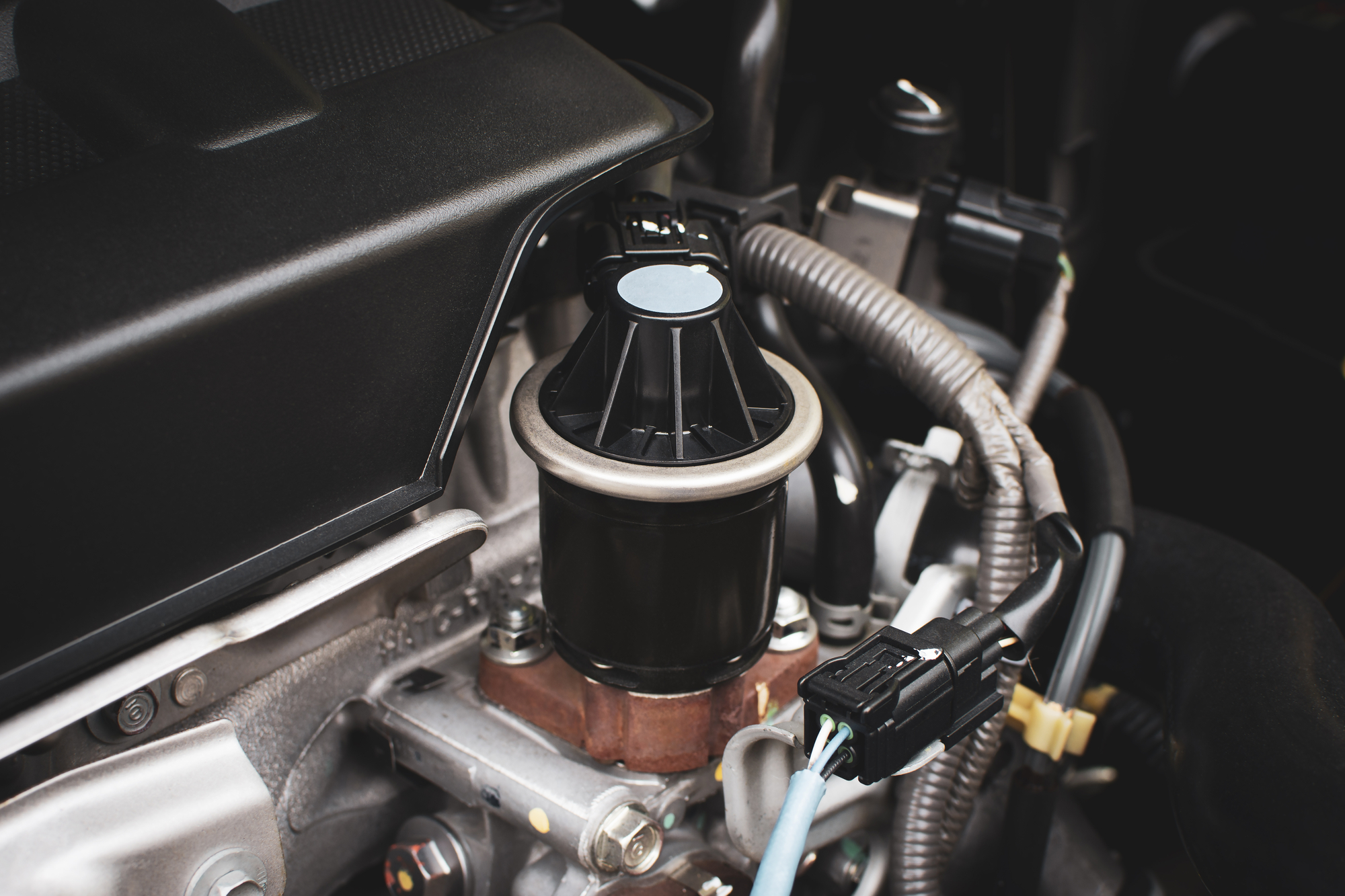

We may earn revenue from the products available on this page and participate in affiliate programs. Learn more ›
Controlling vehicle emissions in modern vehicles involves more than just bolting up a catalytic converter and calling it a day. There are other components that effectively, and intuitively, cut out the bad stuff to help stave off the next mass extinction. Parts like the CCV, or crankcase ventilation system, send noxious fumes from under the valve cover to the throttle body to burn up rather than get vented to the atmosphere. A similar system is the EGR, which stands for exhaust gas recirculation.
The EGR reduces nitrogen’s harmful tailpipe emission evil twins; nitrogen oxide and nitrogen dioxide. Nitrogen itself is a perfectly normal everyday gas, but NOx are two air pollutants that do a number on our environment and lung health. Thus, how does an EGR system come to the rescue and help reduce these bad actors? Let’s discuss this intuitive piece of automotive equipment.
Recirculation is Key
The key part of exhaust gas recirculation is that last bit—recirculation. The EGR pulls out a portion of what’s exiting the exhaust ports and recirculates it back into the engine. For the most part, the EGR valve is attached to the car’s exhaust header to capture the bad stuff as soon as possible. It’s then fed back to the intake manifold, but not before passing through some form of cooling so that intake temperatures aren’t increased too much.
The EGR Valve is Variable
When the EGR-sent exhaust mixes with the oxygen coming through the air filter, it dilutes the air/fuel mixture to burn slower, thus bringing down combustion chamber temperatures and reducing overall NOx emissions. The EGR valve has the ability to send precision measurements back to the intake system—this kind of fine-tuning is an additional plus mark on the side of environmental friendliness.
This means the EGR valve isn’t always open or closed. It’s usually closed upon startup and is variably opened and closed based on how much power is needed. Often, it’s more on the open side at low speeds because not as much power is needed. Then, it’s fully closed at higher speeds when more power is needed, as the engine needs as much oxygen as possible mixed with the fuel to create efficient, power-filled combustion.

There’s More Than One Type of EGR
Both gasoline and diesel engines utilize EGR systems. In fact, diesel engines often have two—one for the pre-particulate filter and one for the combustion. The former upstream one cuts down on the amount of soot flowing to the filter. EGR valves can be both vacuum and digitally controlled, both have some way of telling the ECU how open or closed they are.
What Happens When an EGR Goes Bad
EGR valves sit in a rough place that sees a lot of heat. Not only that, but soot, oil, or coolant (if the head gasket is failing) can mix with the exhaust and clog up the system. When the EGR wears out or malfunctions, it usually triggers a check engine light that will clue you or a mechanic in so that the repair process can begin.
Besides throwing a check engine light, signs that the EGR is going/has gone bad are a decrease in power, rough idle, or shaky acceleration. If the car is turbocharged, a failed EGR can damage the turbo as well, further affecting driveability and becoming more expensive to fix.
More from The Drive
- Jonathon Klein shows us how to change a fog light
- Here’s what oil weight means and why it’s important
- Which oil weight is best for your car?
- Hank O’Hop explains changing tires at home